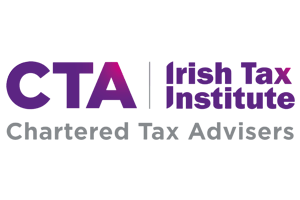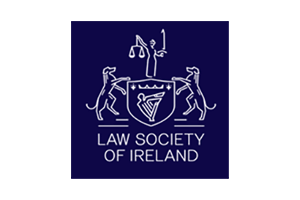There is an age old problem presented by clients regarding how to provide for their offspring on their deaths where the parents wish an inheritance to pass to their children in a tax efficient manner, yet they wish to protect their children from inheriting at an immature age. Typically the parents wish to provide that, after provision for the surviving spouse, the children should not inherit until each is aged 25.
The implications of taxes and protection for children have not been considered in any great detail to date as, fortunately, it is rare for both parents to die when their children were young. Now however because of separation/divorce a sole parent wishes to provide for his children on his death alone; also clients with significant wealth often wish to provide that their spouse will only take part of their estate on death with part passing to the children whilst the spouse is still alive, there are more instances of young children inheriting on the death of one parent only.
1. Favouring tax efficiency over protection – The Bare Trust
The most tax efficient method of taking an inheritance is to give it to the child so that he takes it absolutely. This is held in a bare trust when the child is still under 18.
• Legal effect
The legal effect of this for a child is that, as the child cannot give a valid receipt to the executor until he ‘comes of age’ at age 18, the inheritance is protected from the child in a bare trust until age 18. However once 18, the child is entitled to call on the bare trustee to hand over the inheritance. Most parents would be concerned that a child is not sufficiently mature at that age to receive an unrestricted inheritance.
• Tax effect
The tax effect of this is that for CAT, CGT and income tax purposes, the child is deemed to inherit the asset at the date of death of his parent and taxed accordingly. For CAT purposes, the usual tax free threshold (€496,824 in 2007) is applied to the value received and the balance is subject to inheritance tax at 20%. At age 18 the inheritance is handed over to the child.
• Advantage
The principal advantage to this type of inheritance is the fact that the tax is paid immediately.
• Disadvantage
The principle disadvantage to this method of providing for a child is the fact that there is no restriction in legal terms on the child taking (and spending) his inheritance at age 18. Many young adults are not sufficiently mature at that age to handle an inheritance of significant value.
2. Favouring protection over tax efficiency – The Discretionary Trust
Despite the fact that discretionary trusts are considered to be tax avoidance structures, they are in fact the best way of protecting children from taking an inheritance until each child is sufficiently mature to do so.
• Legal effect
Under such trusts the parents select trustees whom they trust to make the judgement call on the level of maturity of each child. The trustees will appoint trust assets to the children at their absolute discretion.
• Tax effect
The tax effect of this is that the child is deemed to inherit the asset at the date of the appointment of the trust assets to him on the exercise by the trustees of the discretion and the child is taxed accordingly. The usual tax free threshold (€496,824 in 2007) is applied to the value received by the child and the balance is subject to inheritance tax at 20%.
Once the youngest child who can benefit under the trust reaches his 21st birthday, if the trust is still in place or to the extent the trust still applies to certain assets, discretionary trust levies apply (6% initial and 1% per annum thereafter with a refund of 3% if the trust is wound up totally within five years).
The appointment from the trust to the child is a taxable event for CGT purposes, albeit that usually there is a credit available for the CAT paid.
• Advantage
The inheritance is protected from the child in a discretionary trust until the trustees exercise their discretion. While the assets remain in the discretionary trust, the trustees can apply capital and income for the benefit of the child e.g. for living expenses, education etc.
• Disadvantage
While the parents can hope that older children in the family will have shown sufficient maturity by the time the youngest child has his 21st birthday so that the trustees will have appointed out their share of the inheritance, this is unlikely to be the case for the youngest child. The difficulty is that the youngest child does not have the same chance as his older siblings to reach maturity without the additional tax cost of the levies.
3. A sensible balance or not? The Fixed Trust
Parents may take the view that there will come a time when their child should have enough maturity. Many Wills therefore provide that a child should take his inheritance at a particular age, the typical age being age 25. Where parents instruct that they would like their child to inherit at a particular age, it should be explained to them that reaching a particular age is not necessarily a guarantee of maturity. There are also ‘hidden’ taxes that make this form of trust quite inefficient for tax.
• Legal effect
The legal effect of a fixed trust is that the inheritance is protected from the child until the selected age. Only at that stage is the child entitled to call on the trustees to hand over the inheritance to him.
Depending on how the Will is drafted, while the child is under the age of 18, the trustees can or must apply the income of the inheritance for the benefit of the child. If the trust does not allow the accumulation of income, the income not yet applied to the child at regular intervals from the date of death of the parent to age 18 must be paid out in lump sum at age 18 and all future annual income must be paid out to the child at regular intervals from age 18 on.
• Tax effect
The tax effect depends on the version of the fixed trusts that applies. Assuming the selected age is 25, the following applies:
Where the trustees have power to accumulate income, the trust is deemed to be a discretionary trust for CAT and income tax purposes (Section 2(1) CATCA03). On the child’s 21st birthday, if there are no other principal objects in the trust, discretionary trust levies will arise (6% on the child’s 21st birthday and 1% per annum thereafter, albeit that 50% of the 6% levy will be refunded on the 25th birthday). On the child’s 25th birthday the child is deemed to inherit the asset at that date and is taxed accordingly. The usual tax free threshold is applied to the value received and the balance is subject to inheritance tax at 20%. The difference between this trust and the discretionary trust is that the trustees here do not have the flexibility to amend the trust to avoid the levies. Again the winding up of the trust on the 25th birthday is a taxable event for CGT purposes, albeit that usually there is a credit available for the CAT paid.
Where the trustees do not have power to accumulate income, it is Revenue’s view that the child is deemed to inherit an interest in possession for CAT purposes on the death of the parent. In such a case, assuming the child survives to age 25, this inheritance is ultimately taxed as a limited interest calculated by subtracting from 25 the age of the child at the parent’s death to arrive at a calculation of a period certain (and then applying the rules in Schedule 1 Part 1 Paragraph 6 to arrive at the taxable value). The usual tax free threshold is applied to the value received and the balance is subject to inheritance tax at 20%. On the child’s 25th birthday the child is deemed to inherit a further absolute interest in the trust fund at the value at that date of the trust fund for CAT purposes. The child’s earlier fixed interest is aggregated with the absolute interest now taken. The usual tax free threshold is applied to the value received and the balance is subject to inheritance tax at 20%. In effect there is a double charge to CAT on the same assets in the trust. This tax treatment is however uncertain as it rests on the Revenue’s interpretation of the legislation in light of the case of Jacob (Brigid Kathleen) v Revenue Commissioners 1984 III ITR 104 which case was settled without fully determining the issue of value.
Again the winding up of the trust on the 25th birthday is a taxable event for CGT purposes, albeit that usually there is a credit available for the CAT paid.
• Disadvantage
The effect of this is that the typical fixed trust is quite tax inefficient either because of the discretionary trust levies or because of the risk of double taxation for CAT. In any event it does not afford real protection for a child should that child still be immature at the selected age. Also income may need to be appointed out before the child is mature.
4. Recommendation
While at first sight it may seem sensible to advise parents to take the ‘balanced’ view between protection and tax efficiency by adopting a fixed trust structure, such a structure does not afford the tax efficiency that one would assume. Also, given the nature of a fixed trust, the protection is only available until a particular age, whether a child is in fact mature at that age or not. It is therefore more appropriate to suggest to the parents that their assets be divided into certain asset types that would be suitable to put into a tax efficient bare trust and those that should be held back in a protective discretionary trust. Assets suitable for bare trusts could be those that are restricted in some other way, whether it be investment assets held in joint names with others where their consent is required to sell, or assets that are subject to mortgages which require bank’s consent to sell.


